Christmas Traditions at UNI
The Christmas holiday season has always brought out the community spirit on campus. From the decorating and lighting of Christmas trees to the enjoyment of hot chocolate and carols, Christmas has been a time to relax with friends and food.
And, oh, the traditions here at the university--the Tree Lighting Ceremony, the Messiah, cocoa and carols, all-campus dinners, dances and formals, and the Varsity Men’s Glee Club Variety Show, to name a few. Since the early history of the school, the literary societies, the sororities and fraternities, and other student organizations have held their own holiday parties, but it has been the long-time community traditions that have given the campus its feeling of closeness.
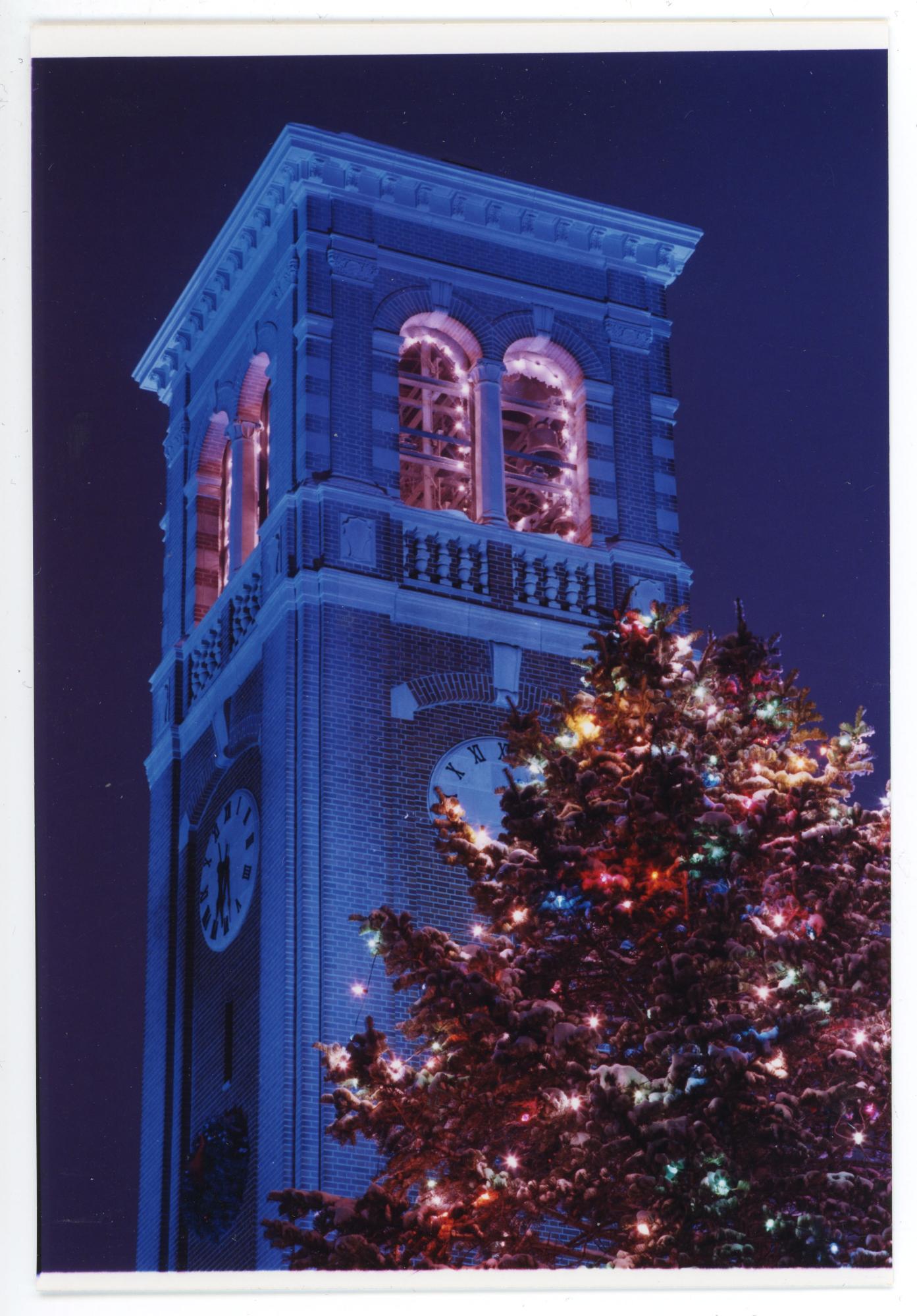
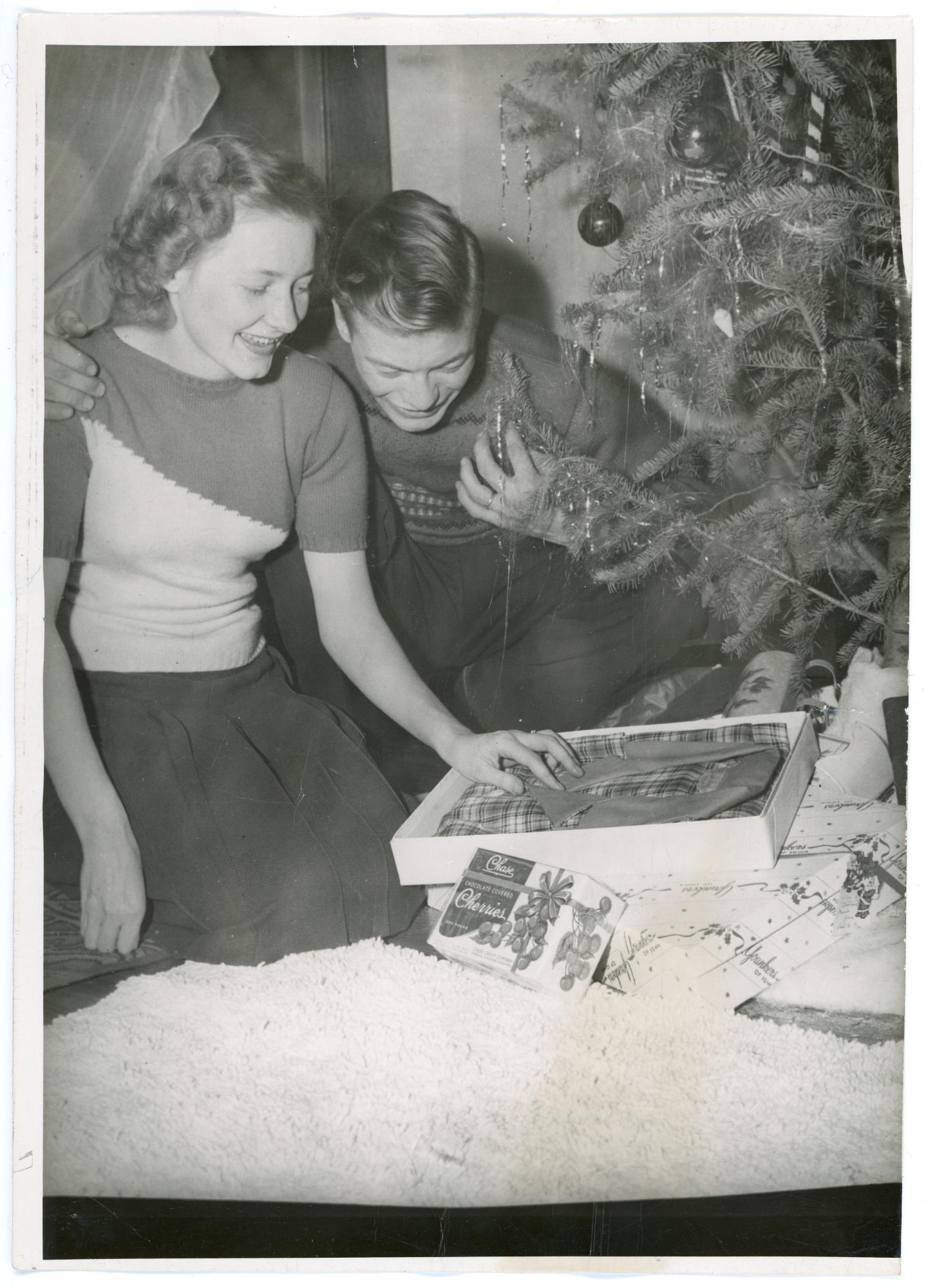
Messiah Performances
Performances of Handel’s Messiah are one of the oldest campus Christmas traditions. These performances began as early as 1896 and continued with great regularity through the 1980s. In some years the number of those involved was small because of unusual circumstances on campus. Indeed, in 1943 the performance was canceled altogether because some of the soloists had influenza. In other years though, the number of people involved in the production ranged from 150 to over 350, depending on the strength of the glee clubs and orchestras. The event was always well attended not only by people on campus but also by members of the community. In 1948 the performance was moved from the Auditorium, which seated an audience of approximately 2000, to the Men’s Gym (now known as the West Gym), where more than 4000 could attend.
Tree Lighting Ceremony
President Malcolm Price was responsible for this long-standing tradition. His goal was to bring military personnel, who were then training on campus, together with the students, faculty, and staff for the holiday season. In those difficult days of World War II, the ceremony helped to unite the two disparate campus elements--students and military personnel--in a statement of national purpose. The ceremony began in 1943 and endured without interruption down through the year 2000.
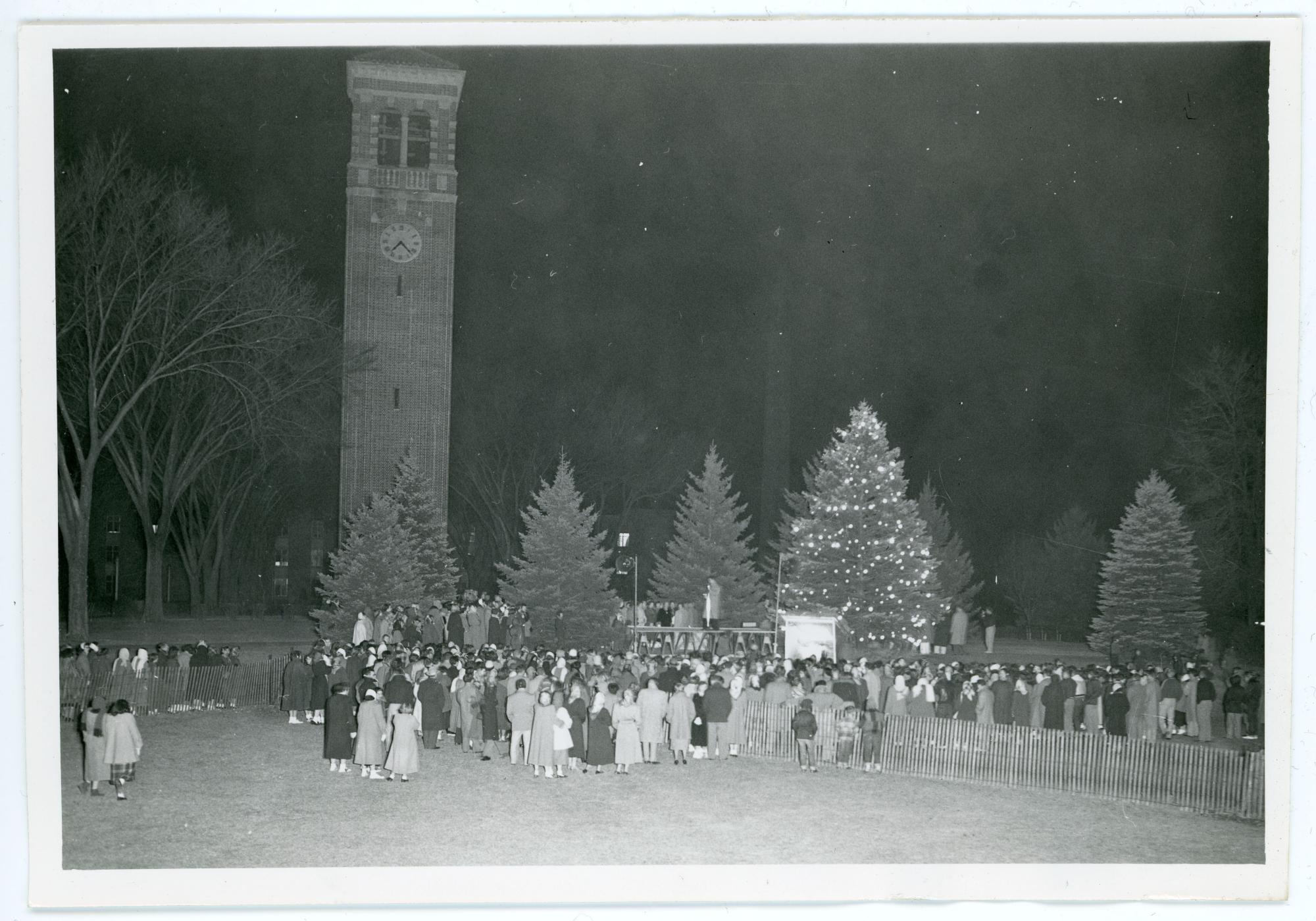
Over the years, the Tree Lighting Ceremony has taken place in several campus locations. It has also gone through certain modifications to reflect the times. In the early days of the ceremony, a tree south of Commons was decorated. After some years the ceremony moved to the large spruce that stood at the southwest corner of Maucker Union, in a place now occupied by the "Iowa Cycles" sculpture. In recent years the ceremony was held near the three large evergreens between the Union and the Physics Building. In 1974, the tree was decorated with just a single light in recognition of the "energy crisis". When additional tree lighting and Christmas decorations appeared around campus in the 1980s, letters to the editor in the student newspaper criticized the university for devoting energy and money to this kind of effort.
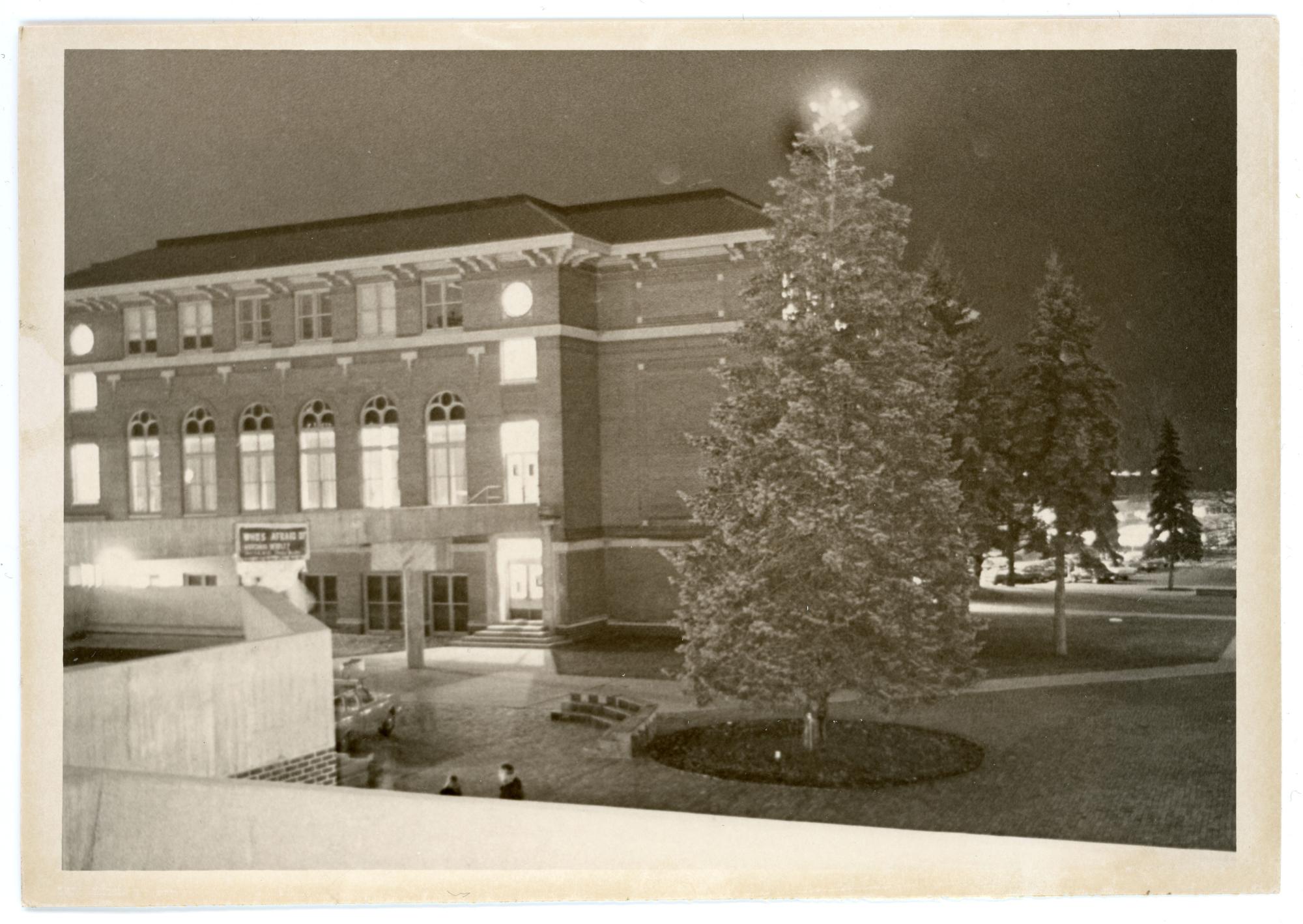
Through the years the Tree Lighting Ceremony has provided an opportunity for students to come together for the holiday season. Crowds sang Christmas carols, faculty and student musicians played, and everyone enjoyed hot chocolate and other snacks. In the 1940s residents of Lawther and Bartlett Halls returned to their individual residence halls to decorate their own trees, while off-campus students went to the Commons to decorate the large tree in the Georgian Lounge. The groups would then get back together for more singing and cocoa. In some years the festivities would include a dance, complete with an orchestra.
When World War II ended, many veterans returned to campus with their families. Children in these families became involved in the Tree Lighting Ceremony. In 1949, five children, who lived in the Sunset Village quonset huts on campus, sang a Christmas song for the crowd. In most recent years, children from the university’s Partners in Education program, Black Hawk Elementary School, have delighted everyone with their presentation of holiday cheer.
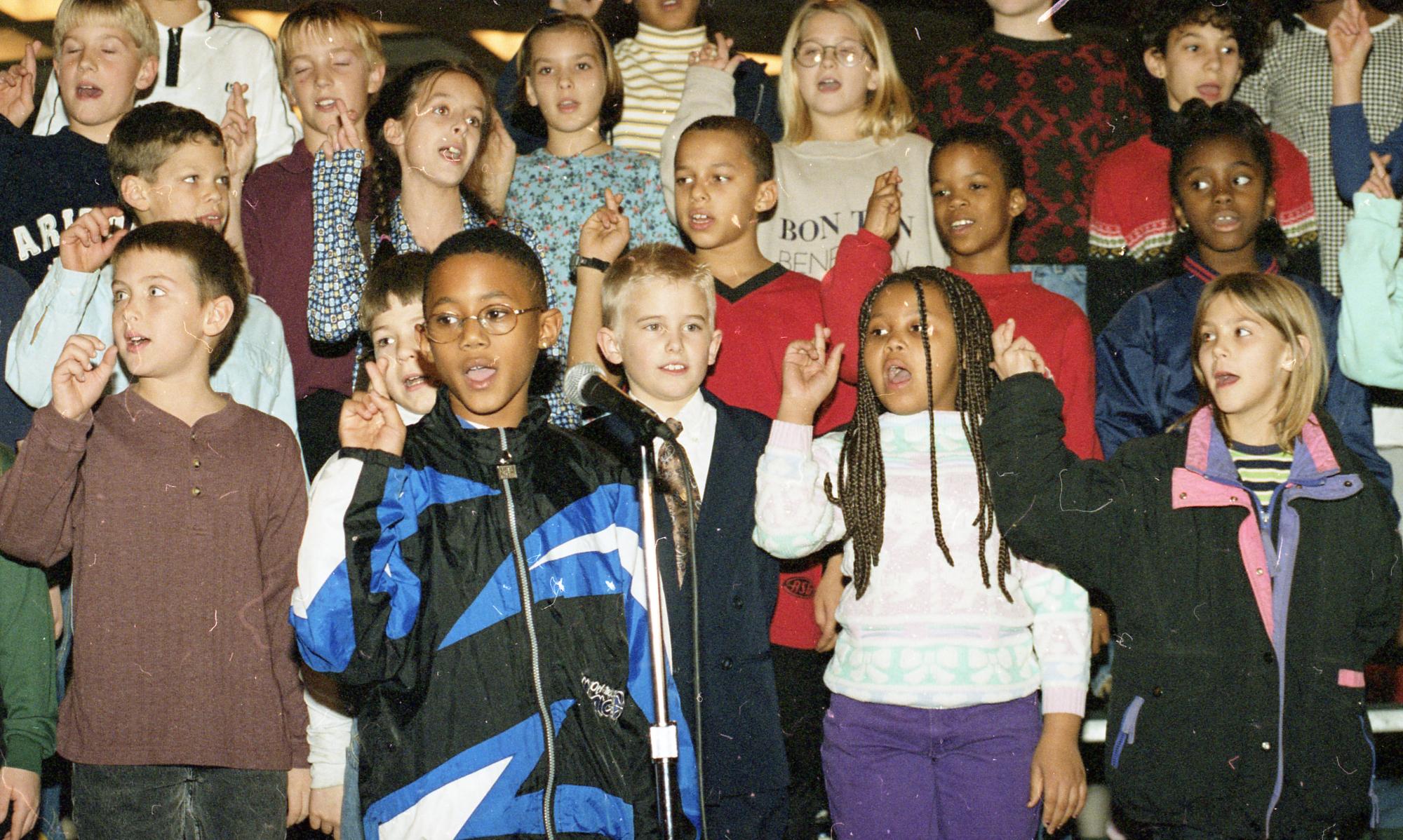
Cocoa and Carols
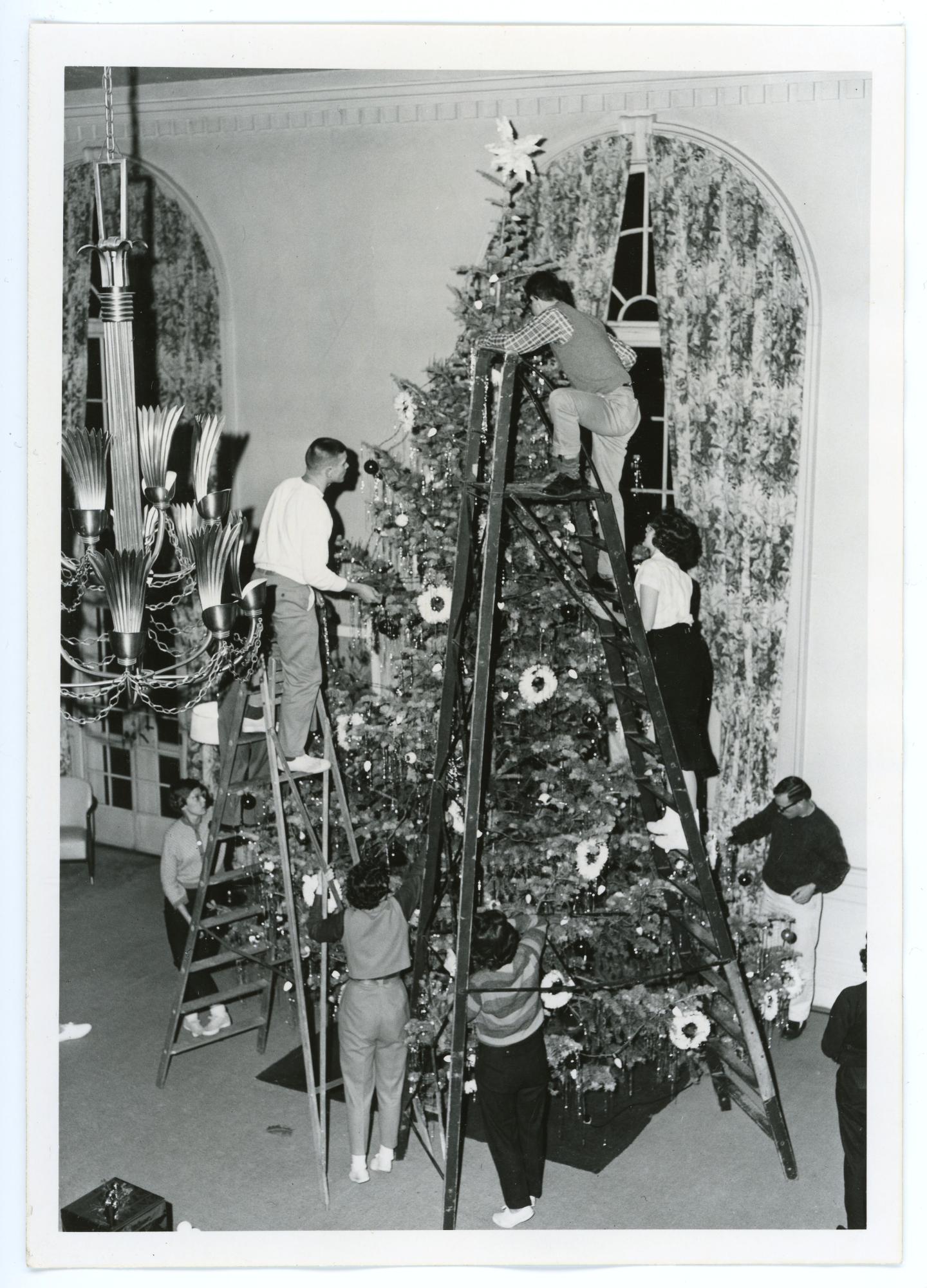
When the Iowa State Normal School began the tradition of having an all-campus Christmas tree located in the Crossroads, students, faculty, and staff would gather around the tree and sing carols at noon for fifteen minutes. During the 1940s these impromptu gatherings evolved into the Cocoa and Carols program. The campus would celebrate the season with a week-long schedule of events. From the second through the fourth days of the week, people would gather in the evening, in the Commons Lounge, around the large decorated Christmas tree, to sing Christmas carols. And, of course, hot cocoa was served.
The UNI Marshall Center School in recent years has put on a similar kind of program, in association with the activities of the annual Tree Lighting Ceremony. After the caroling and just before the tree lighting ceremony, everyone was treated to a lighted, horse-drawn trolley ride.
All-Campus Christmas Dinner
Students, faculty, and staff began enjoying the tradition of a holiday dinner in 1933. The first dinners were held in the Commons Dining Center, where everyone on campus, including faculty and staff, would gather for a turkey dinner and Christmas goodies. In 1942, though, Commons was unable to hold its traditional Christmas dinner because of wartime food rationing measures. There was usually some sort of entertainment associated with the dinner. Sometimes there would be a musical program before dinner in the Georgian Lounge. Sometimes groups sang Christmas carols during dinner. Occasionally there was a basketball game afterward and then a dance to complete the evening.
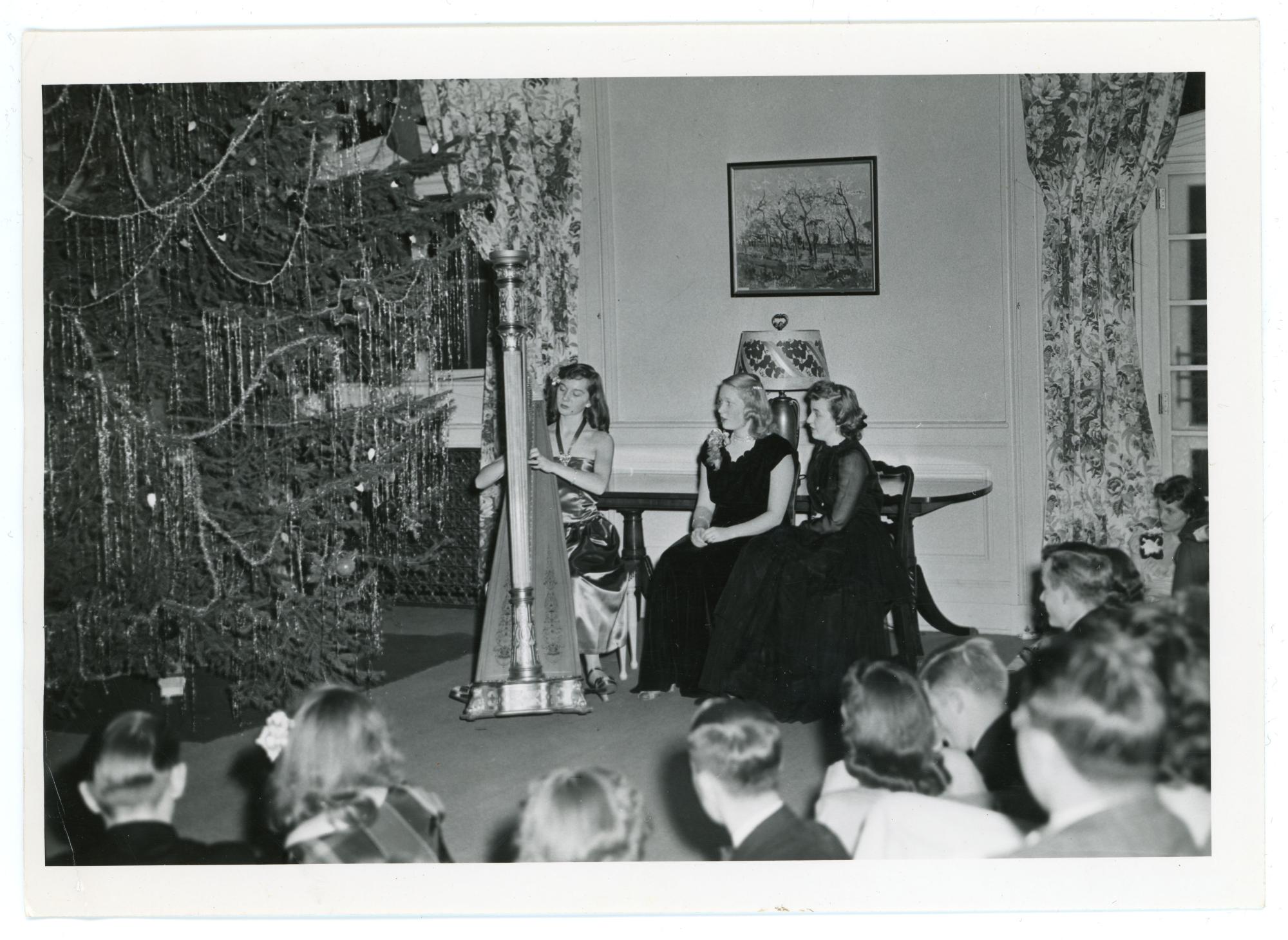
As enrollment grew to exceed the capacity of the Commons, it became necessary to modify the traditional Christmas dinner. At first the number of tickets sold was simply limited to the serving capacity of the Commons. But because of the exceptional demand for tickets, the dining center began serving the dinner in four shifts; students would sign up for the shift at which they wanted to eat dinner. With the opening of additional dining centers on campus, it became possible for each center to offer its own version of the holiday meal.
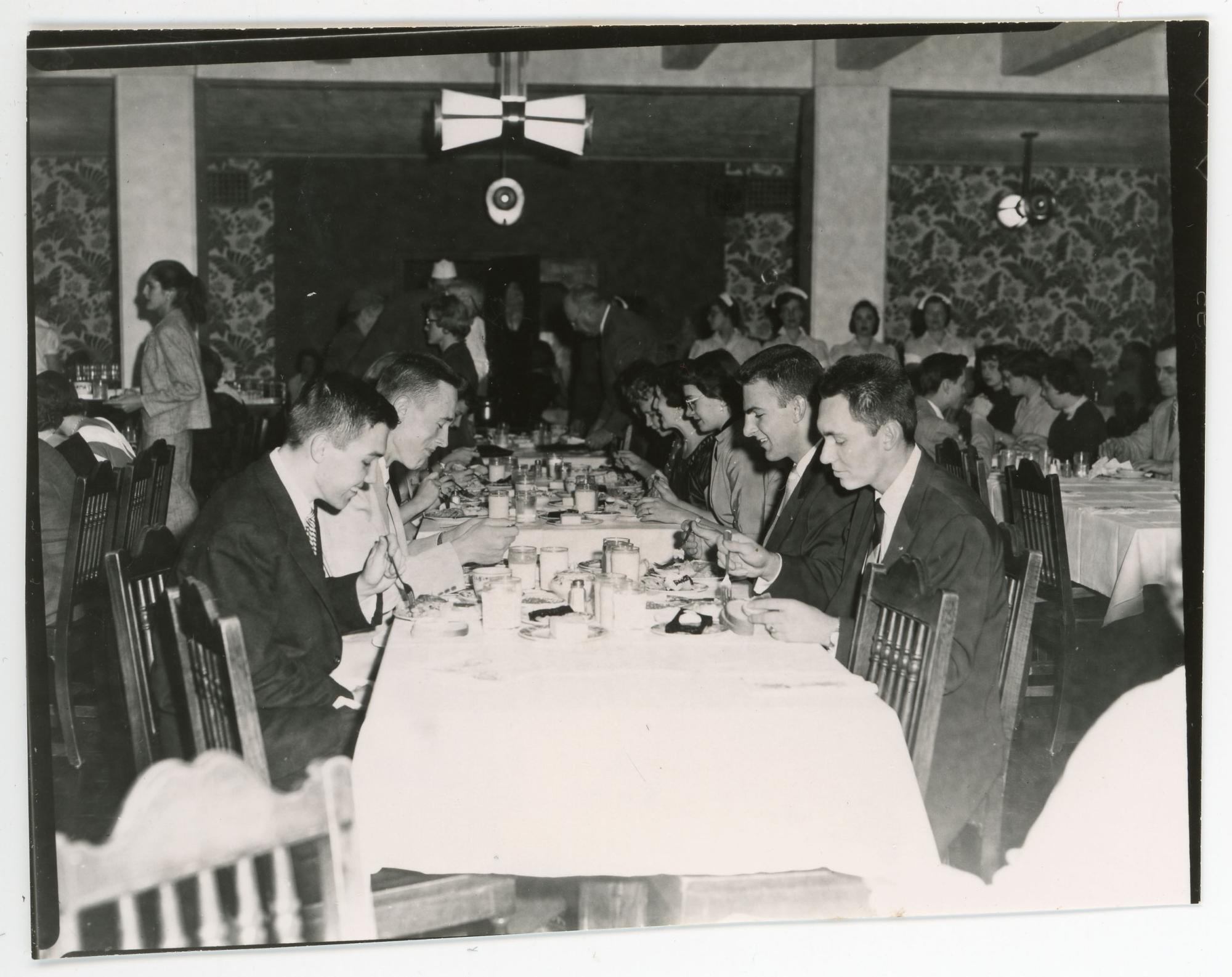
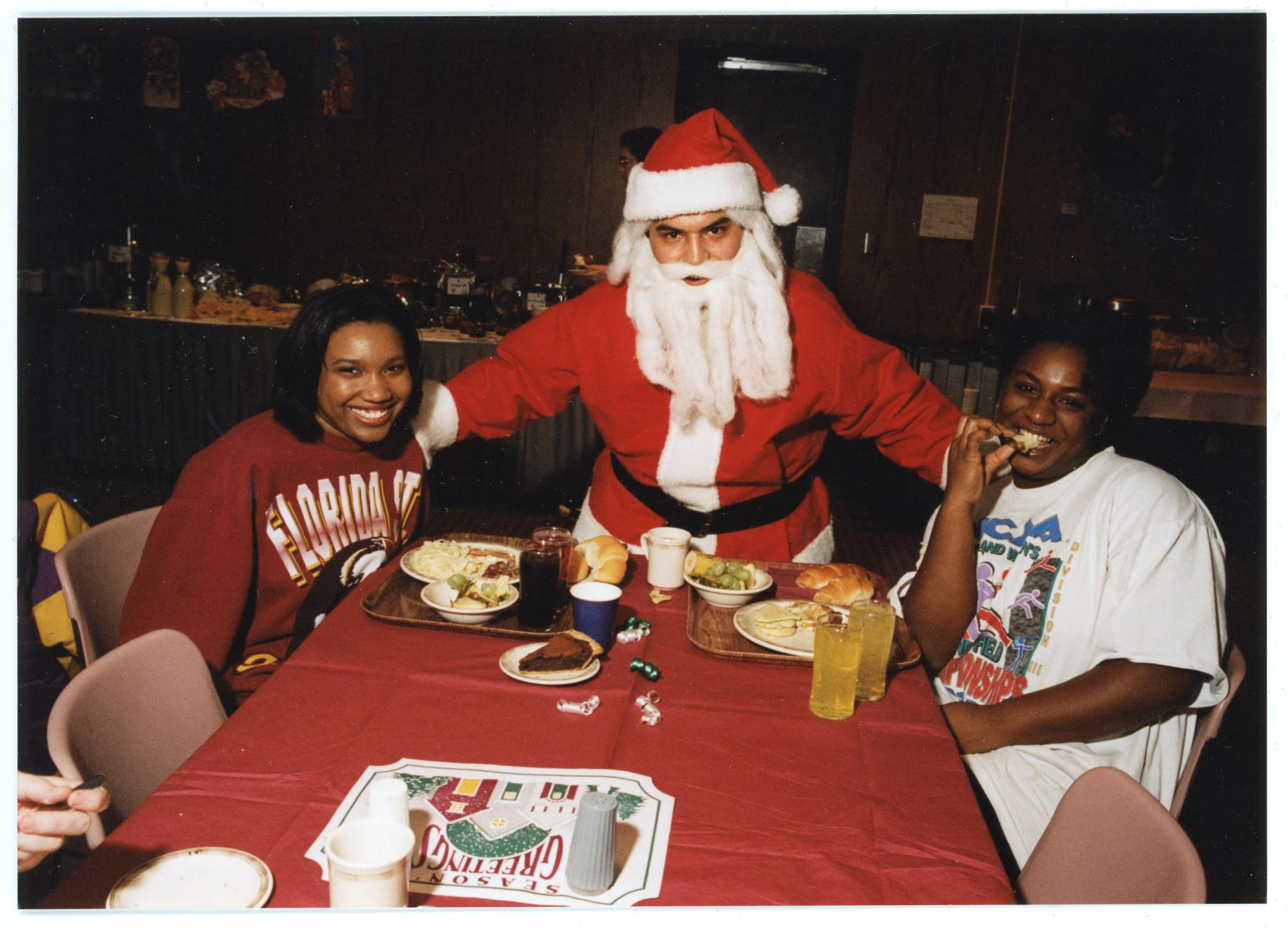
Dances and Formals
The themes "Fantasy in Frost", "Wintermezzo", "Snow Ball", and "Mistletoe Memories" should give a clear picture of decorated ballrooms and men and women in formal dress at some of the Christmas dances. This first official "winter formal" was held in 1934.
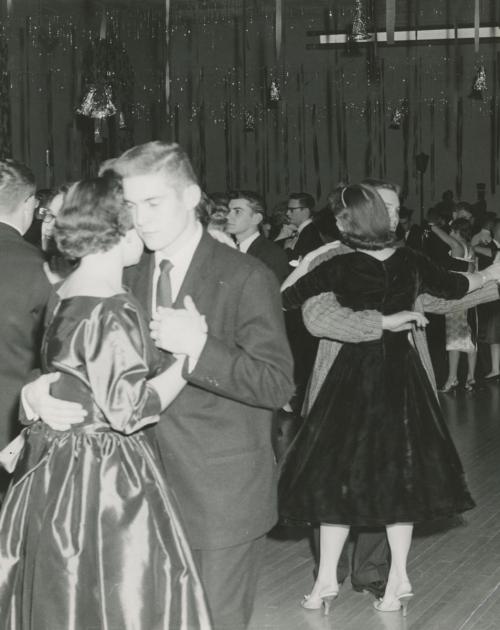
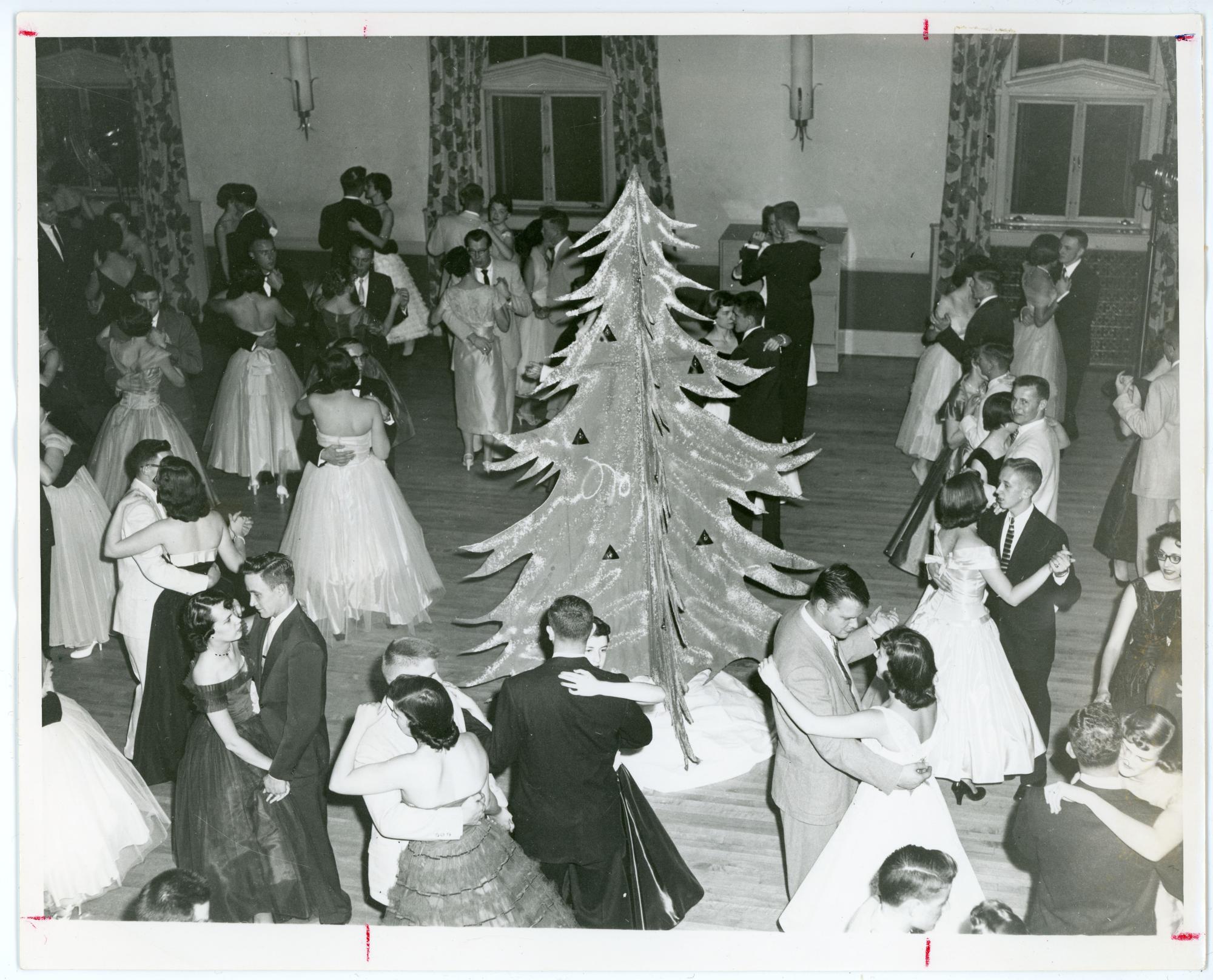
After that year some of the winter dances were semi-formal rather than formal to help cut down on expenses. In fact, in 1949 the dance was made a non-corsage, semi-formal dance. Small flowers were made and given to the women at the dance so that their escorts did not have to purchase a corsage. Many years the winter dance was held on the same evening as the all-campus Christmas dinner; it featured a more casual atmosphere referred to as "recreational dancing".
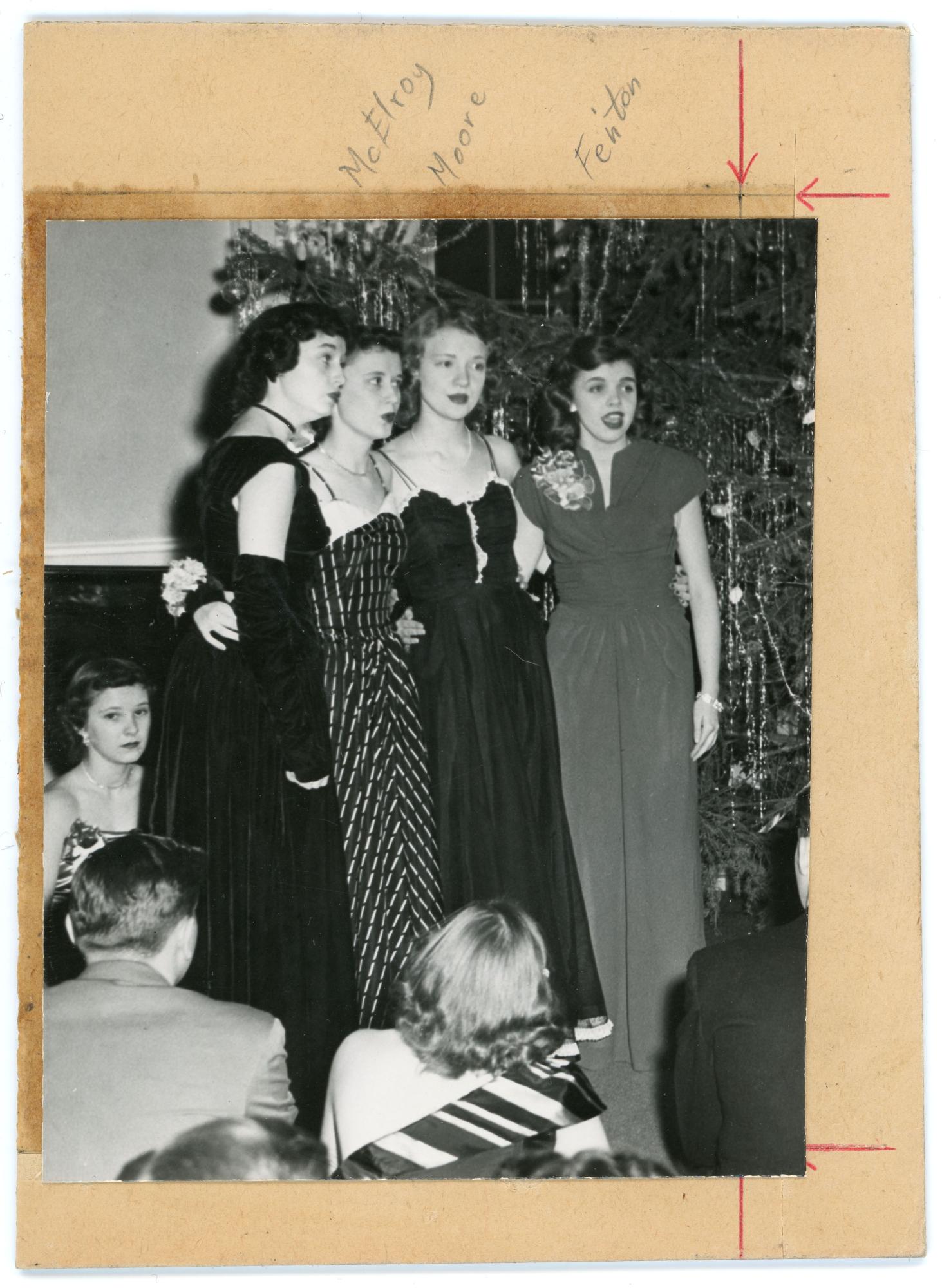
Holiday Break
The break before the Christmas holiday and the return to classes after the new year is something about which students have been concerned throughout the school's history. Carrying sentiment to one extreme, a student in 1960 wrote an editorial in the College Eye stating her belief that no classes at all should be held between the Thanksgiving and Christmas break. Students in 1966 organized a protest outside President Maucker's home to present a petition with over 3000 signatures requesting that Christmas break begins on December 16, rather than the scheduled December 20. After listening to the students and polling the faculty, President Maucker announced that the break would begin as requested at noon on December 16.
When Iowa State Normal School first established its academic calendar in 1876, the fall quarter ended just as the holiday break began. When students returned in January they began their winter quarter much the same as we begin the second semester now. But in 1896 that schedule changed; the fall quarter ended just before or just after Thanksgiving Day. When students left for Christmas, they were in the middle of a quarter. With minor variations, this schedule remained in effect until 1950 when the quarter ended again just before the holiday break. This calendar was in effect for two years before the college resumed its old schedule. Then in 1957, SCI changed from the quarter system to the semester system, and the fall semester began around September 10 and ended in mid to late January. Not until 1975 did the university establish the schedule with which we are familiar today: now fall final examinations signal the beginning of the holiday and interim break. For a good many years the students had a two-week recess for the holidays; this was the norm as indicated in the Christmas Recess Schedule. In 1975, when the university adopted its current semester schedule, the holiday interim began to stretch to three or four weeks long.
Conclusion
Christmas traditions and celebrations at UNI have come and gone over the years. Some, such as the Messiah performance and the Tree Lighting Ceremony, have had remarkable staying power. Some have arisen suddenly and disappeared quickly. Just about all of them have evolved in the light of their own times and circumstances. In recent years there seems to have been a trend away from large, community gatherings and toward smaller celebrations. Perhaps the sheer size of the campus community makes this necessary. Or perhaps it is due to changing societal values. Whatever the reason, it will be interesting to see how, or, indeed, if Christmas will be celebrated at UNI in the future.
Researched and compiled by Library Assistant Gail Briddle; edited by University Archivist Gerald Peterson, December 2001; last updated, February 9, 2015 (GP). Images updated by Lydia L. Pakala May 31,2019; photos and citations updated by Graduate Assistant Eliza Mussmann, April 19, 2023.
